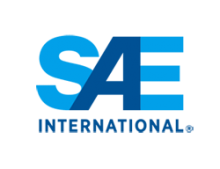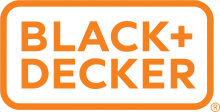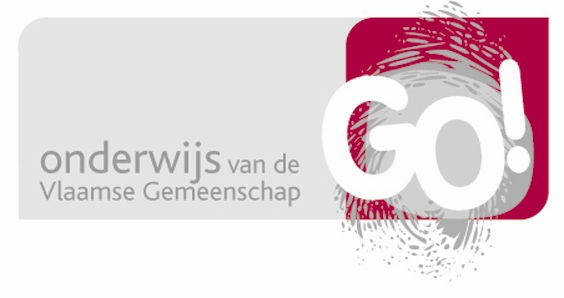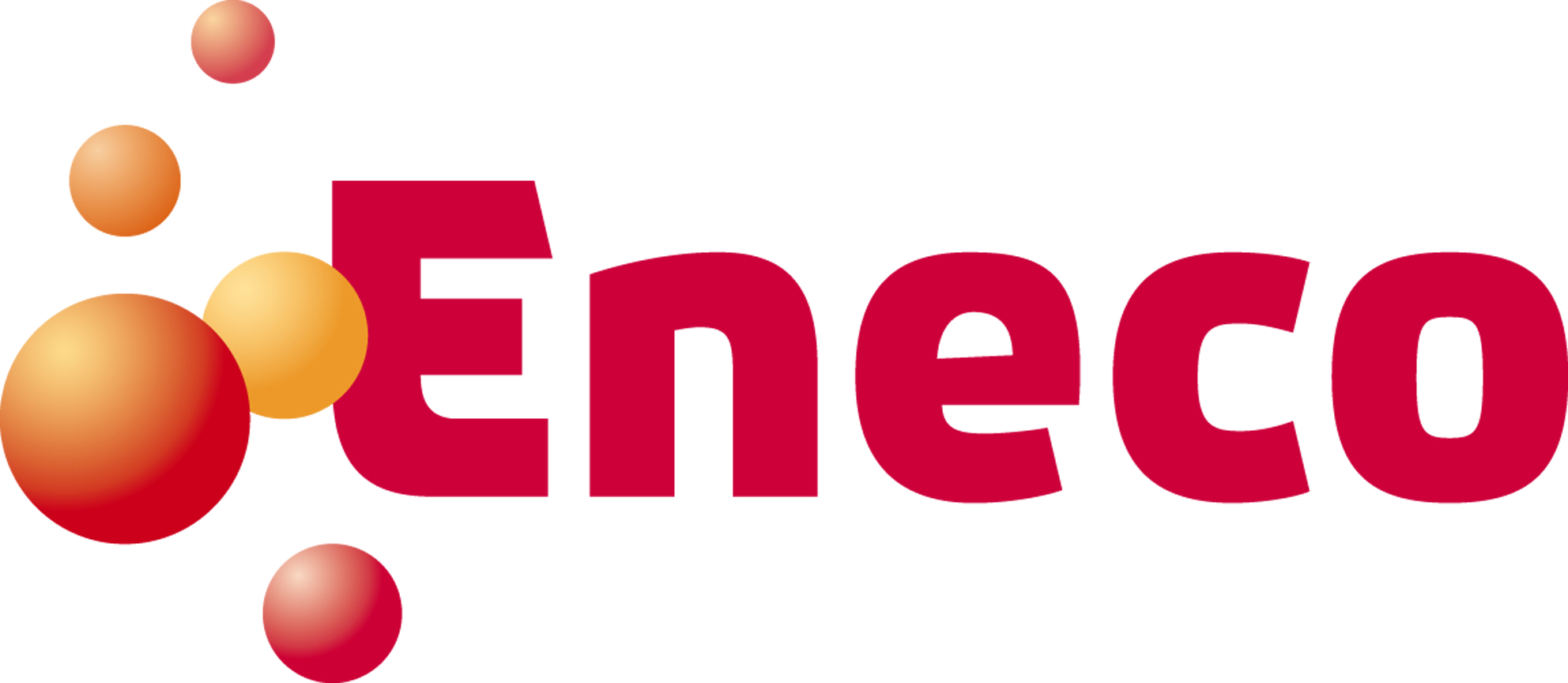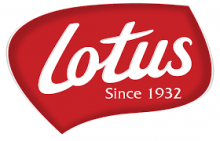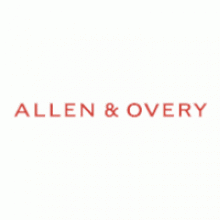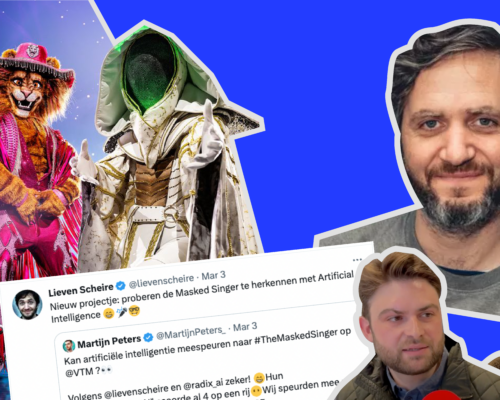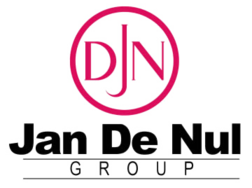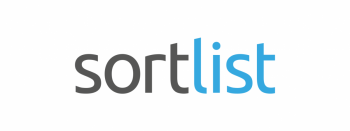What is trade show marketing, and why is it so important?
Whenever we have a call with a B2B prospect, we jokingly say that every industry has a huge event in Germany – usually in fall or spring – where the entire industry congregates. To our never ending amazement and delight, almost every time the client agrees: “Yes, indeed, ours is in Frankfurt in March”.
A few years ago during the Covid pandemic, we predicted on this blog that trade events would suffer – but that the largest events would come back roaring after the pandemic, bigger and more relevant for B2B marketers than ever. It wasn’t a huge stretch to predict, but this is exactly what happened.
The question is: how do you make the most of it? Of course you’re thinking and working hard to make your booth the most impressive in the hall – but how can you make sure that you go beyond the booth? How do you make it about your brand?
In this article, we share our “blockbuster playbook” to make sure that all attendees of the trade show see your brand, discuss your brand and think about your brand.
Why you should treat trade show marketing like a blockbuster
If you follow us, you know that we are proponents of the school of Byron Sharp, Les Binet and Peter Field and similar “brand building” marketing scholars.
These marketing gurus basically advise brands to do the following:
- Reach your entire category. Your goal as a marketer is to become one of a handful of brands (preferably the first) that your buyers think of when thinking of your category. This is a simple idea, but hard to achieve.
- Develop strong creative concepts. Research shows that creativity is a key driver of success. Creativity is more memorable and will get people talking about your brand – creativity is viral
- Make your campaigns bigger. Finally, make your campaigns bigger. And then make them outrageously large. Do not play it safe.
In her excellent book “Blockbuster”, Anita Elberse shows that in Hollywood, it’s better to release one movie with a huge budget and a huge marketing campaign, than to play it safe with smaller movies and smaller marketing budgets.
Think of Barbie and how it was absolutely everywhere: that’s what a 150 million USD marketing campaign can deliver in terms of awareness, buzz and (more importantly) activation of your customer base. Barbie was also successful in finding original ways of Barbie-ing the world.
The same principle applies to marketing. Channels are saturated, everybody produces content. You should invest significantly more in promoting your content. That means: make better, bigger campaigns, and promote them harder.
Building a blockbuster trade show marketing campaign
Coming back to trade shows and B2B marketing now: if you want to reach the whole category, what better place to start than an event where your entire category is present? Your audience is there, buzzing with anticipation about what it will see at the event. It’s your job to make sure that they see your story about your brand.
So we need to focus on the creativity and on the campaigning/promotion part. That’s what a blockbuster trade show marketing campaign is all about:
Six to three months before the trade show: develop a storyline
To create a memorable trade show presence, go beyond showcasing existing or new products. Define a compelling insight for the trade show and develop a memorable story around it.
Case: SAE – Paris Airshow
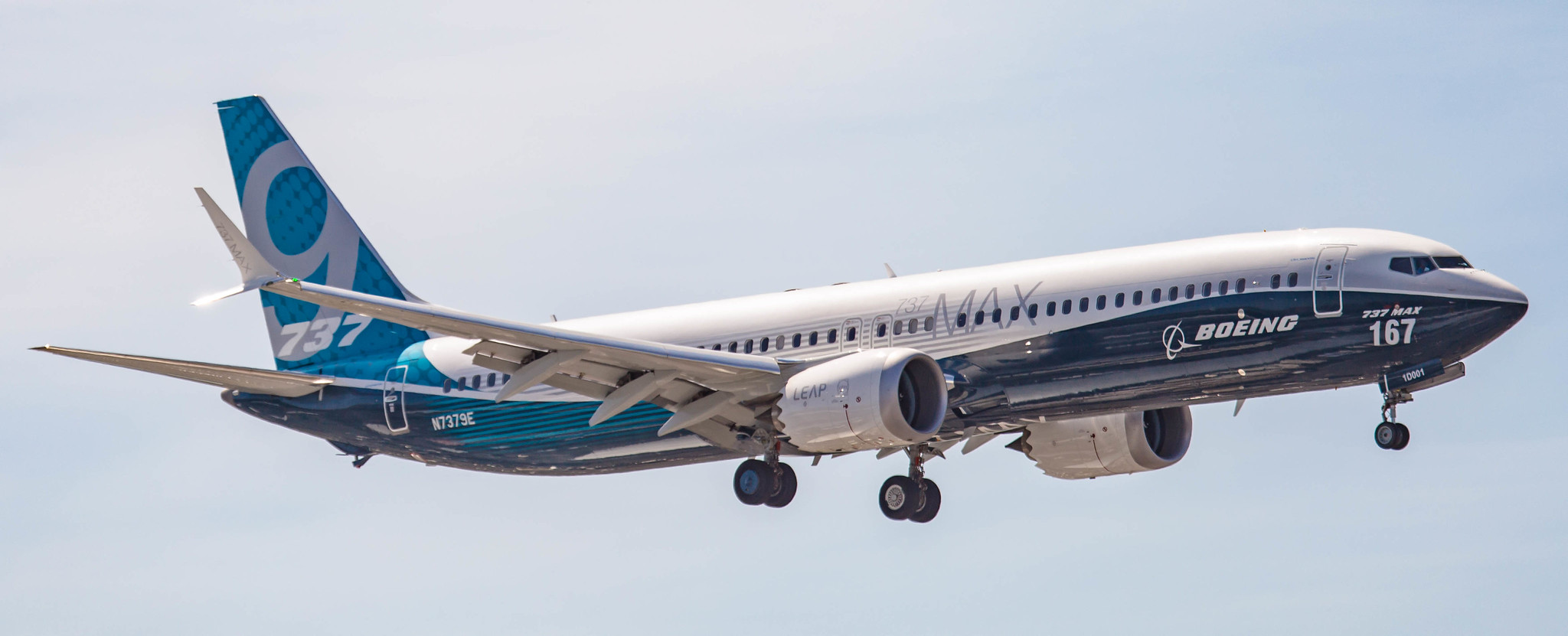


(Photo: the competition at Paris Air Show. Photo: Clemens Vasters, Paris Air Show on Flickr Creative Commons)
When SAE International attended the Paris Air show, it knew it had to compete with the likes of Boeing and Airbus, who would present new models at the Air Show. Based on our research, we saw that “electrification” of air travel was a small but growing theme in the industry.
With the client, we developed thought leadership content around the question: “When will we see a Tesla for the skies?” Meaning: when will we develop an electrical wide-body aircraft that is capable of flying from London to New York? We packed this piece of content with memorable nuggets of information, like: “Getting a Boeing 747 in the air would require 4 million laptop batteries”.

We successfully pitched this story on the World Economic Forum blog a few weeks before the start of the Air Show. That way, attendees and journalists knew well in advance that SAE International would be at the air show, and would have insights to share on electrification.
Three months before the trade show: develop the communication plan
Once you defined a storyline, start thinking of all the possible ways to get this story out, and don’t be afraid to exaggerate. Usually we capture the story first in a written piece of content (a blog or whitepaper) which includes a rich mix of facts, data, points of view, expert insights and opinion.
Any story can be turned into a multitude of assets:
- Data can be spun out in infographics
- Infographics can be turned into animated video
- Opinions and points of view become op-eds and bylines
- Expert input lends itself to podcasts and video interviews
- Applications and examples can become client testimonials and customer cases
- Whitepapers can be presented in online and offline webinars, seminars, press conferences and panel discussions
Assets can be deployed in different channels:
- Opinions become op-eds and interviews in earned media
- Whitepapers can be promoted via paid social media on LinkedIn, Twitter,…
- Increasingly, you can promote whitepapers using (paid) B2B influencers, who will discuss your content in their podcasts, on LinkedIn or YouTube channels
- Video content can be sponsored or used as preroll on YouTube
- Presentations and keynotes become speaking opportunities, press conferences, roundtables, background briefings for (trade) media
- And of course any single fact or opinion can be broken out into a standalone organic social media post
The only limiting factor is the bandwidth to produce content, fill channels and your budget to promote it.
Four to two weeks before trade show
Time to come out of stealth mode with your story. In general, we prefer to work via earned media for this “story reveal”.
Case: DSM Additive Manufacturing
A few weeks before Formnext, the major 3D printing conference, we placed an op-ed about sustainability in the 3D printing sector on the blog of the World Economic Forum.
Our goal was to get stakeholders in the industry – attendees and journalists – to come to the trade show with the topic of sustainability and circularity on their minds, as we were going to unveil some new sustainable product lines. Note that we didn’t reveal the products yet, we were just readying the ground to make the topic of sustainability more salient in the industry.
This is the start of your trade show “blockbuster campaign”, and it’s the time when you begin to drop your assets:
- Organic social media: distribute and promote your storyline to set the stage for discussions at the trade show. Aim for a steady drumbeat of content that builds up to the event.
- Owned media: drop your hero content on your owned channels
- Paid social media: promote your story via paid social to make sure that potential attendees know why they need to come visit you
- Promote speaking opportunities or events (panels, roundtables, keynotes, press conferences)
- Earned media: pitch journalists who will be at the show (and those who won’t)
During the trade show: think like a media brand
Once the trade show starts, your communication plan switches to a higher gear.
Whereas you seeded your story before the trade show, at this time you want to deliver a mix of product and commercial content, “behind the scenes” content, product launches and other product and corporate marketing content. Again, more is generally better.
Consider unexpected tactics as well. Attendees are probably in an unfamiliar place – they need transport, they go out to eat, they eat breakfast at the hotel. How can you use out of home advertising (taxis), or digital advertising (Waze, Yelp,…) to connect to them as they find their way around Frankfurt or Chicago?
A crucial part of your planning should be “realtime video”. A lot of brands have a camera crew at the trade show to create an aftermovie.
Unfortunately, this aftermovie sometimes comes weeks after the event. In today’s marketing landscape, that’s simply too late.
Think like a media brand: your content should be as fresh and close to the action as possible.
For our client DSM Additive Manufacturing, we had a video team on the ground at Formnext and a production team in the back office. The job of the video team was to capture interviews with clients and experts of DSM Additive Manufacturing.
This content was sent to our production team, who edited it in realtime and subtitled it for release the next morning before the opening of the venue. Why? Because trade show attendees scroll LinkedIn at breakfast, and they are primed for the hashtags of the trade show: the want to see what is happening.
Also think how you will connect to journalists? Trade journalists are busy. If you are not the market leader, capturing their attention and getting them to your booth won’t always be easy. Good content will help, but so will thinking about timing. Can you set up an event on the eve of the trade show, when people are arriving and not yet exhausted from days of noisy and busy networking? What about after the trade show hours?
Case: Barry Callebaut
To connect the leadership of Barry Callebaut with the key trade journalists, we created an “after hours” dinner at the Barry Callebaut booth. As the trade show the venue was closing (6 PM), we transformed the Barry Callebaut booth into an intimate restaurant, where key journalists were invited to connect with C-level to discuss the business, the products and innovations and the sustainability strategy of Barry Callebaut.


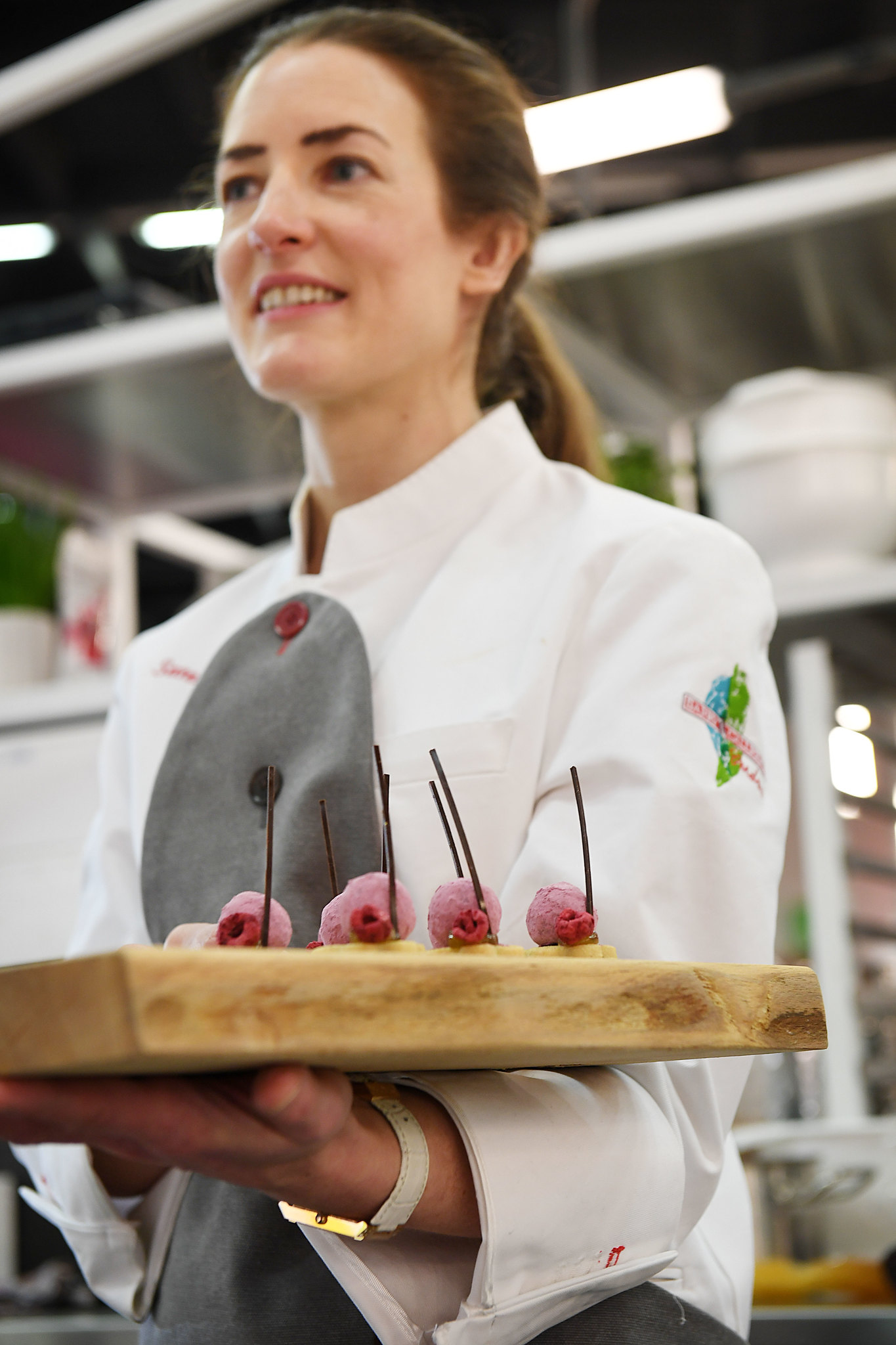




(Photos: Barry Callebaut at ISM trade show, Flickr – used with permission)
Case: Spectricity
Spectricity used CES in Las Vegas as a launchpad for their first product. Their radically new integrated circuit was a global breakthrough in color stability for smartphone photography – but how to bring that message across?
We worked with Spectricity to refine their message, focusing on the fact that even high-end smartphone cameras don’t capture color correctly (“your smartphone is color blind”).
But we also worked on an attractive, highly visual demo of their product, to make sure that journalists truly understood the benefits of the product.
FINN helped us understand that our communication approach had to go all in on a provocative angle: that your smartphone is deceiving you – it’s color blind. We didn’t fully realize that this provocative angle was so key in a successful communication strategy.
Next, we worked with FINN to make our demo as impactful as possible, aligning maximally with our key message. They also helped us simplify things that we hadn’t considered – like giving our product a name (“S1”).
Finally, FINN provided excellent on-site support at CES and successfully lined up major tech media, despite all the noise at CES of other companies screaming for attention. Those tech media were immediately noticed and generated leads from global industry players.
Jonathan Borremans, Chief Technology Officer, Spectricity
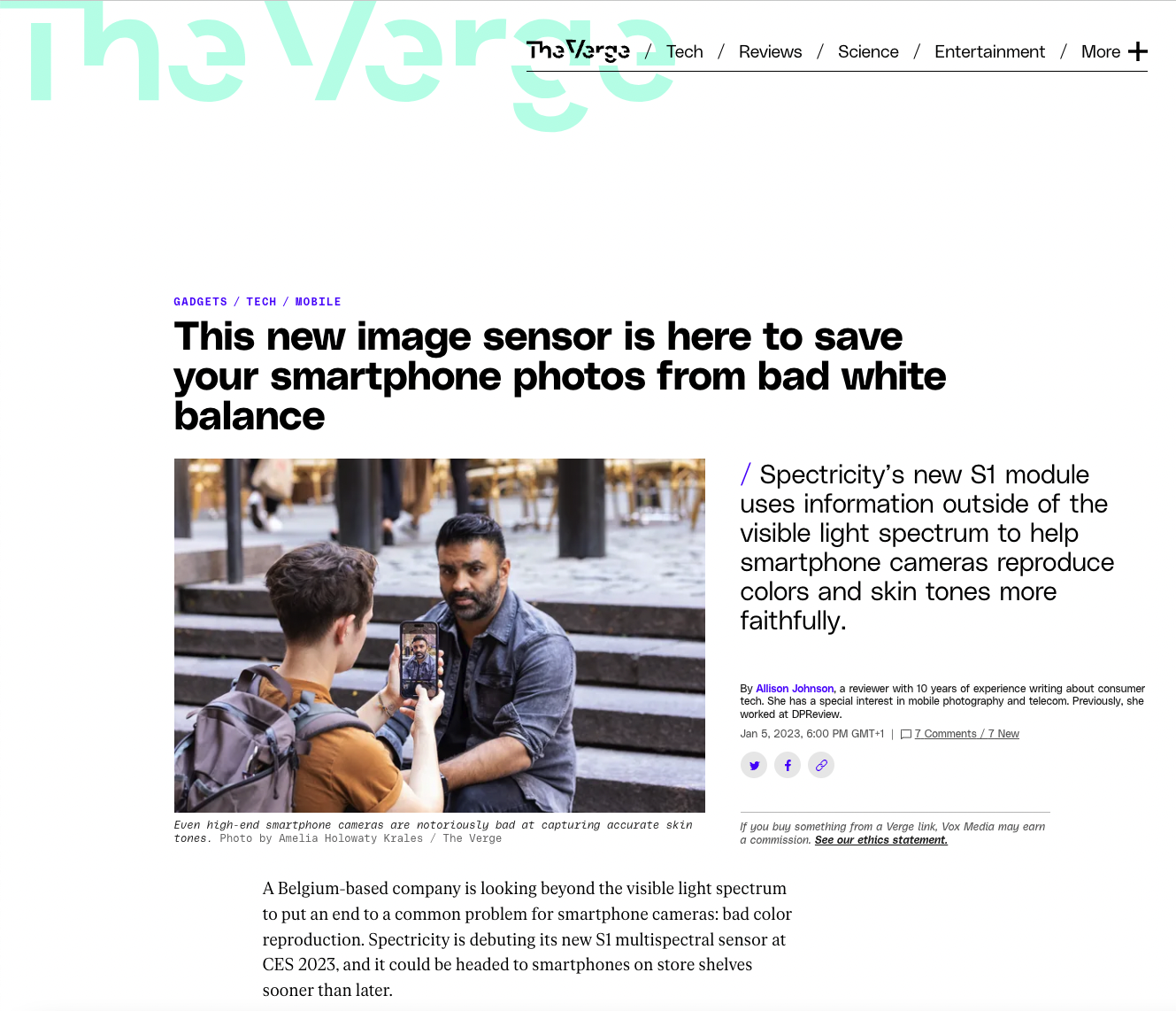
In the end, we managed to get Spectricity in some tech major media like The Verge (and about 100 other tech media worldwide) – which among other things resulted in attention from a Tier 1 global manufacturer:
“Hijacking the hashtag”
Let this simple question guide you as you plan your communication campaign: “how can we hijack the hashtag?” Think beyond sending out communication. Ask yourself how you can make sure that your target audience saw you, heard about you – or if they are a competitor, make sure that they grind their teeth at your relentless presence at the tradeshow.
“Think beyond sending out communication. Think how you can be absolutely sure that your audience saw you and heard you”
- Is your story as provocative and creative as it can be?
- Are you planning any stunts that will get people talking?
- Are you maximizing output on (organic) social media?
- Are you leveraging paid media?
- Are you planning location-based content and out-of-home content?
- Do you have news to announce via earned channels?
- Make sure to include the show’s organizers in your distribution list, as tradeshows usually have a daily update at the start and/or end of each day
- Did you secure speaking slots and panel discussions at the tradeshow?
- Are you setting up a press conference during the tradeshow? (Make sure you check timings of competitors to either counterprogram or avoid their timings)
- Is your camera crew visiting important clients to secure endorsements?
After the tradeshow
A few weeks after the tradeshow, set up a full debrief to discuss the impact of the tradeshow marketing campaign.
Best practice is to report on three levels:
- Output. “If you’re uncertain about the impact, focus on the output first” is excellent advice. Especially if it’s the first time you attempt a full blockbuster approach, make sure you have a solid idea of the number of communications that you’ve managed to create. It gives you a target for next year, as you’ll want to at least equal the amount of communication.
- Outcomes. On this level, you report the number of clippings and the reach that you created in earned media across business, trade and consumer media. Also, the reach that you created on organic social media, as well as any relevant paid media metrics (clickthrough rate, cost per thousand,…) and owned media (website visits, app downloads, demos requested or attended).
- Impact. Finally, it’s all about leads and opportunities. How many visitors to your booth left their contact details behind? How many opportunities did your sales team create based on your presence?
Compiling a solid overview of all these metrics will offer you a baseline that you can aim to exceed next year.
Tradeshow marketing with FINN
For over a decade, FINN has supported market leaders and challengers in making the most of tradeshow marketing, from strategy and concepts to all-out communication campaigns. Contact us today to enlist our help!


